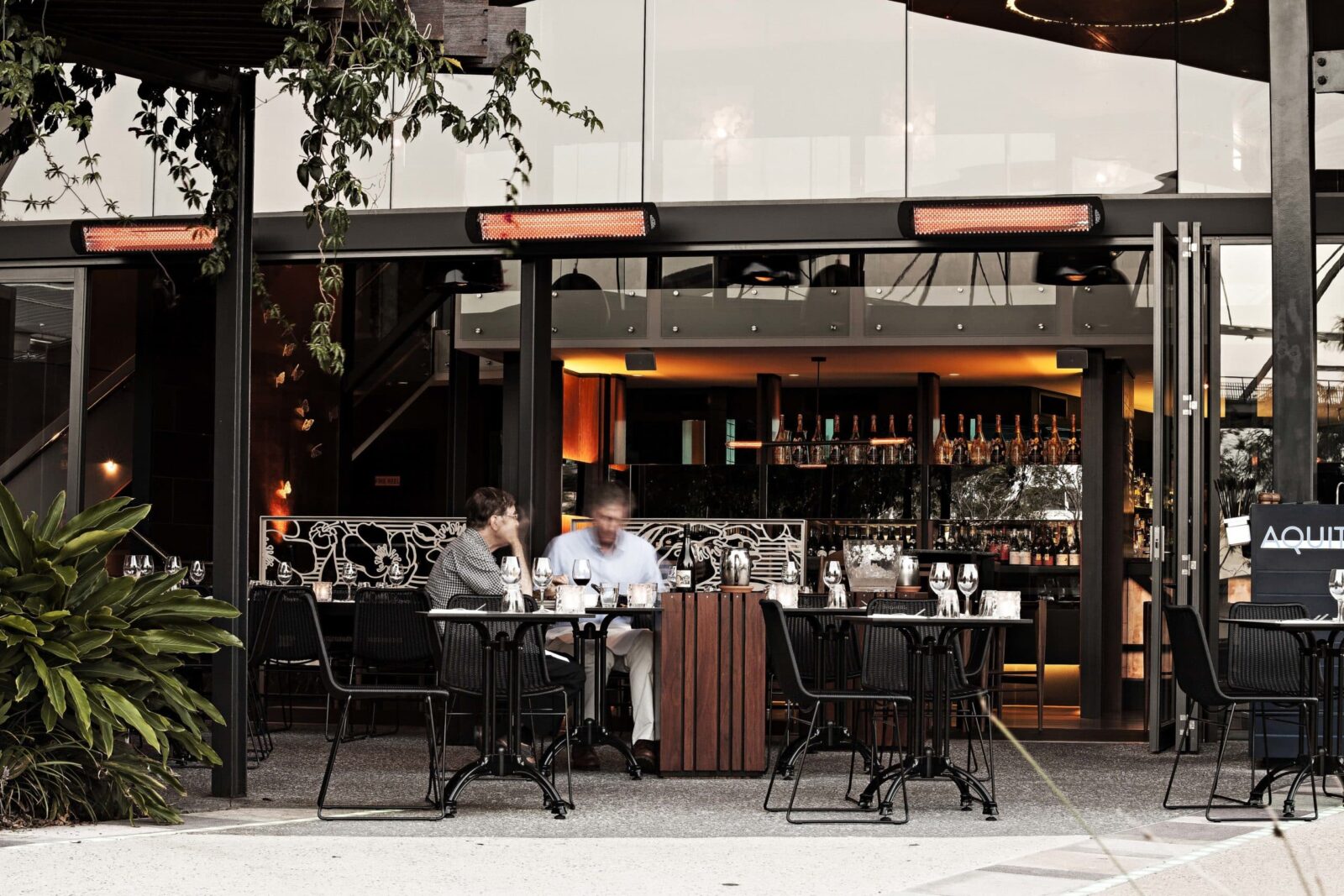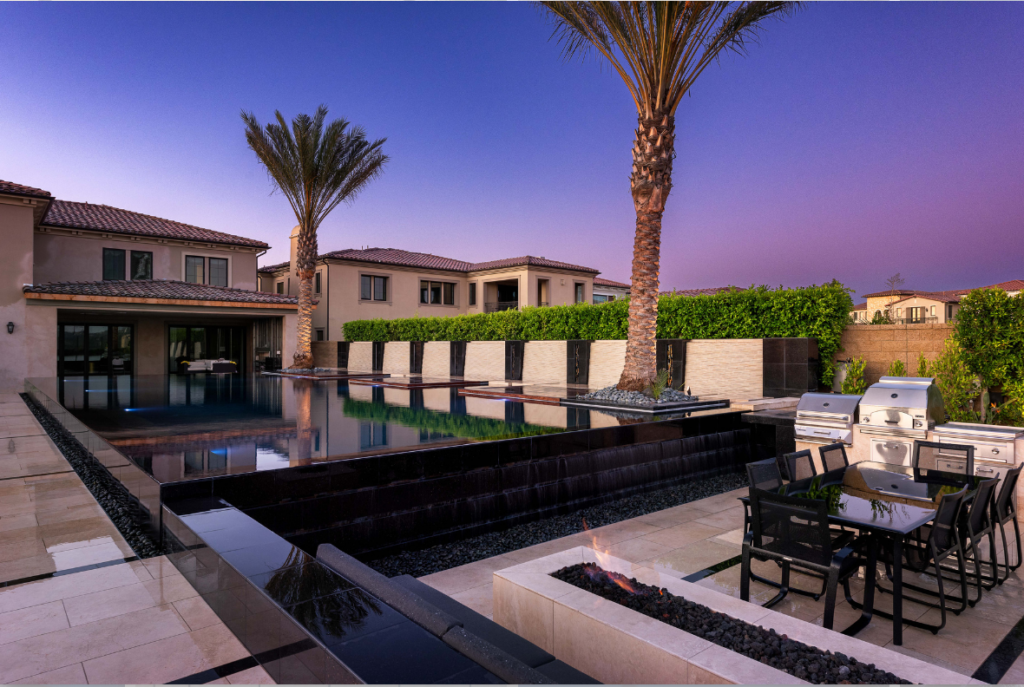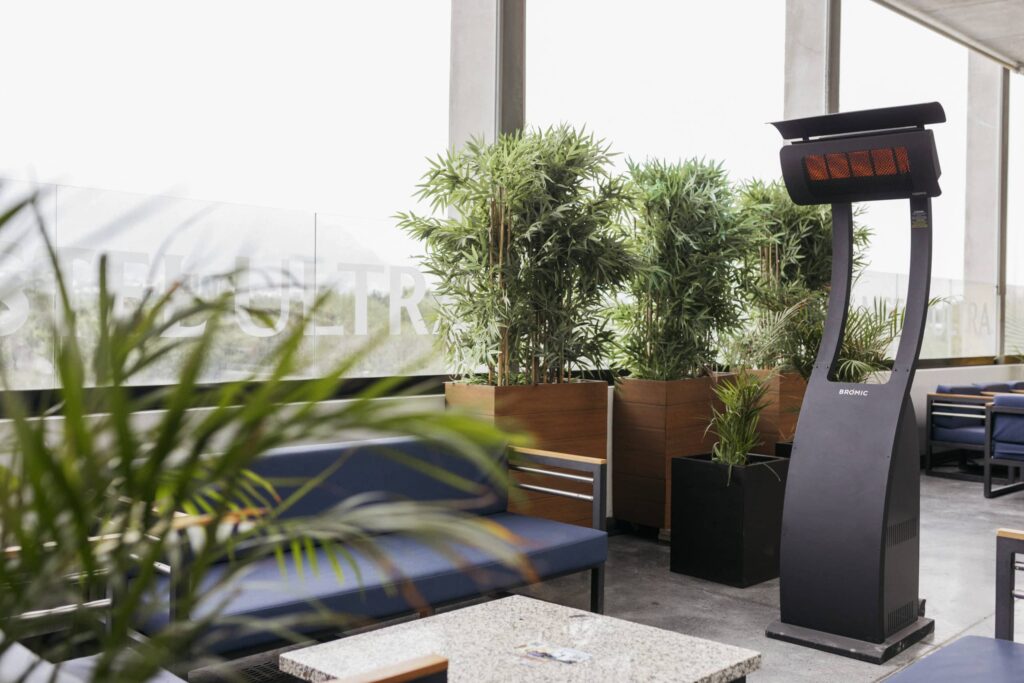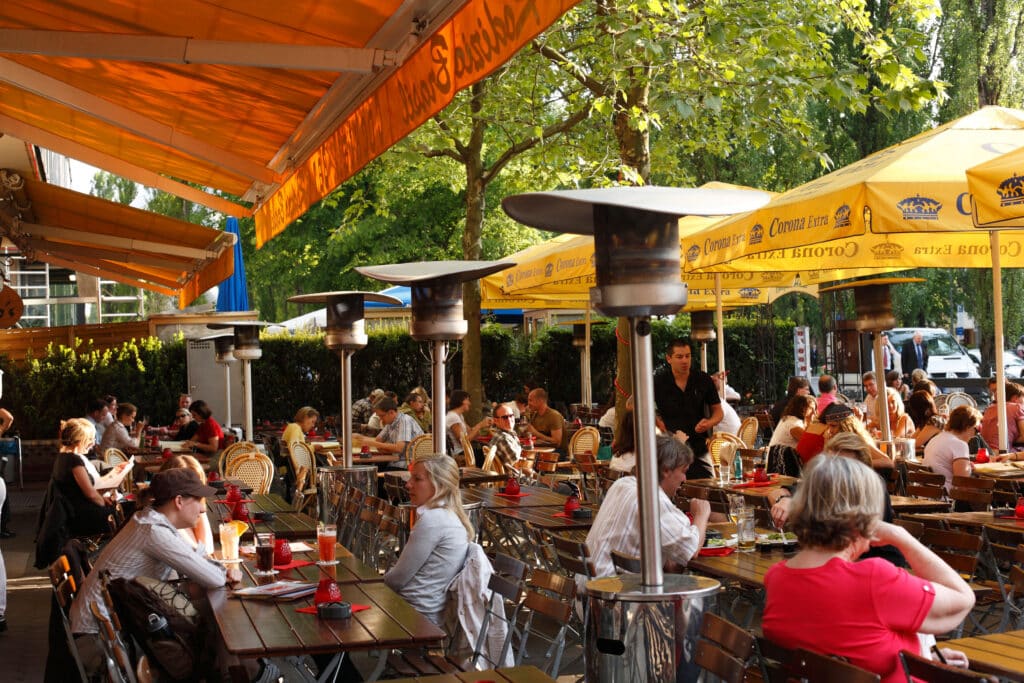Outdoor heaters can bring instant comfort to any outdoor space. However, contrary to enclosed spaces, which can easily retain the heat, outdoor spaces are a lot more exposed to the elements and therefore require a much more effective heat transfer method. So, what kind of heat transfer technology should you consider for your outdoor space?
Radiant or convection?
Most of us will be familiar with convection heaters that can quickly fill up a space with warm air by circulating it around the room. However, since an outdoor area is not a space confined by walls and a roof structure, forced air systems are not effective in controlling the ambient temperature outside. In an outdoor environment, hot air rises and quickly dissipates and even the slightest breeze will diminish the effect of the heating system, making a forced air heating system impossible.
The only way to heat an outdoor area is through infrared radiation. Radiant heat warms objects, not the air, similar to the experience of the sun warming your skin. This method involves projecting infrared heat onto people rather than moving warm air into the outdoor patio. Because radiant heat warms objects and not the air, radiant heaters have a higher resistance to wind and can still warm people even in mild wind conditions.
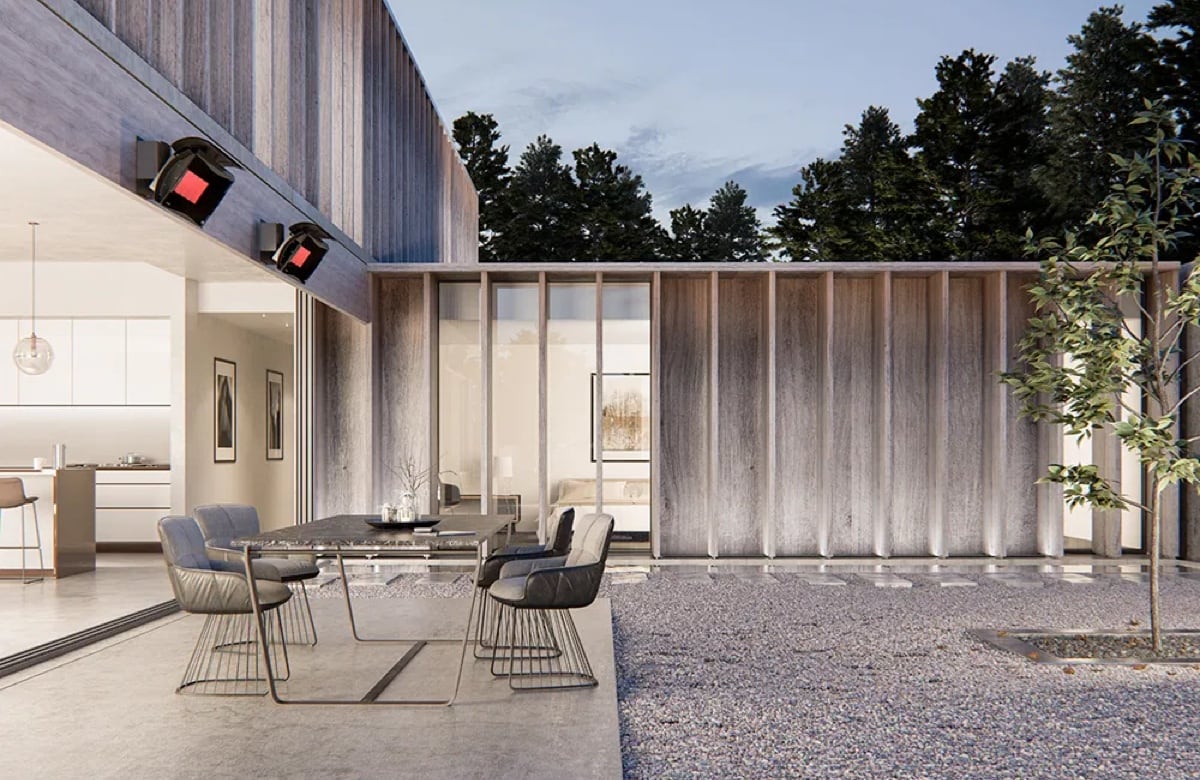
Short, medium, or long?
In general, short and medium wave infrared heaters tend to be the most effective and energy-efficient solutions when it comes to transferring thermal energy, delivering heat efficiencies between 60 to 90%. Using directional heating elements, they can heat up a space quickly and deliver the best possible heat coverage, providing heat exactly where it’s required with only limited susceptibly to external factors, such as wind or draughts. Long wave heaters on the other hand can take up to five minutes to heat up and only emit around 40% of radiant heat while being highly susceptible to winds, decreasing their suitability for most outdoor spaces.
Heating people, not places
Short to medium wave infrared heaters are by far the best solution when it comes to designing an outdoor space that is both stylish and sustainable. When looking at your options, ensure that these heaters are designed so that heat is only emitted in one direction and not wasted via the back of the heater. In addition, be aware that some of the shortwave heaters will emit a bright orange glow, so make sure you select a model that has been engineered so this effect is minimised.
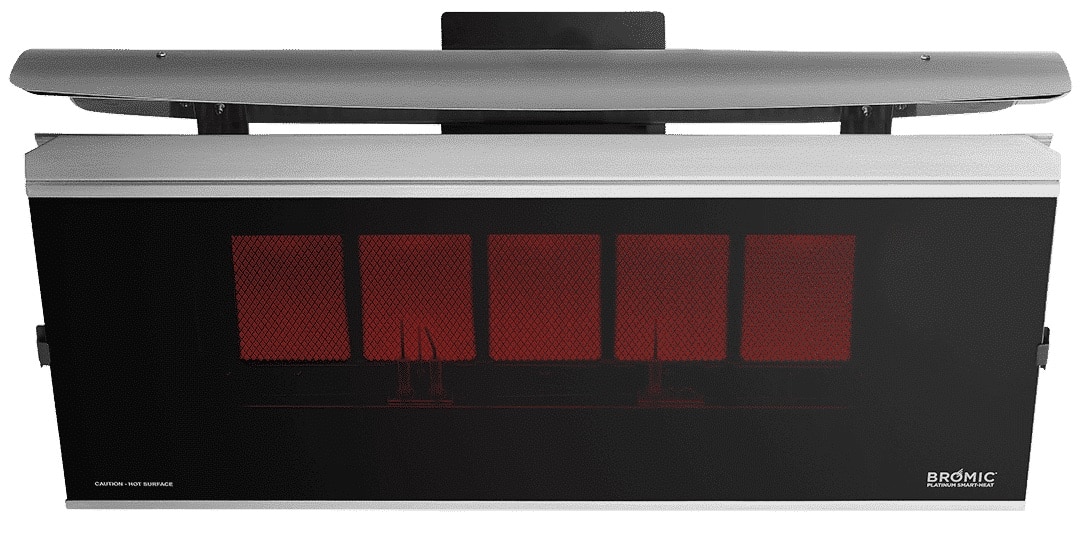
Radiant heating is the foundation for all Bromic heaters. When properly specified, Bromic heaters can heat any outdoor space more effectively than many of our competitors because of this principle. Available with sleek, tinted ceramic glass screens that spread the heat evenly across a wide area, Bromic heaters provide both comfort and style while minimising unwanted light emissions.
Free Outdoor Design Guide
Would you like to know more about designing the perfect outdoor space? Download our Free Outdoor Design Guide and find out how to maximise your outdoor experience or complete a design request to receive a complimentary drawing of your outdoor space.

